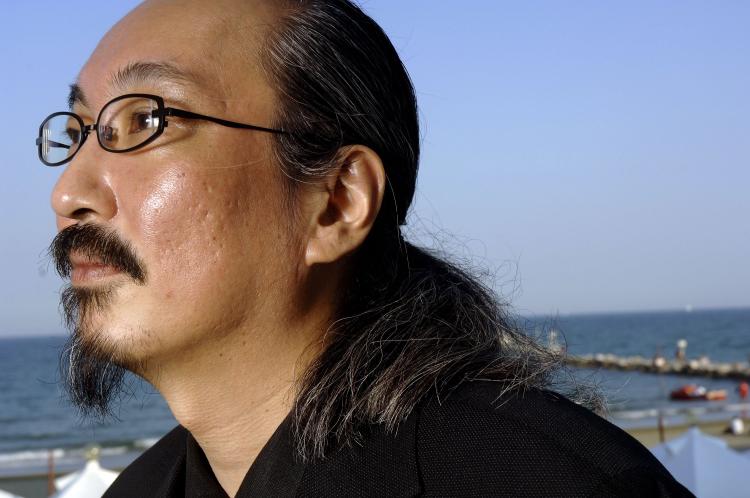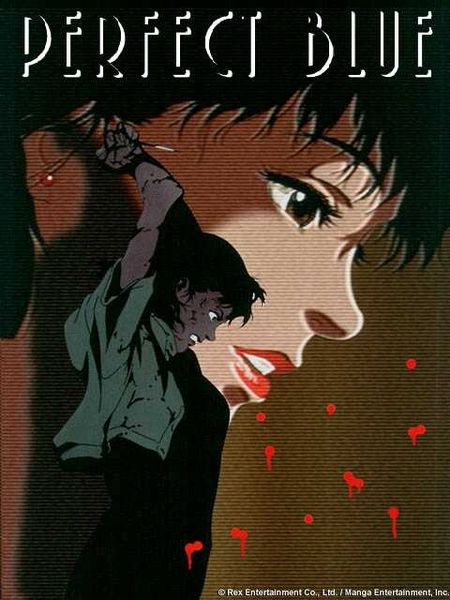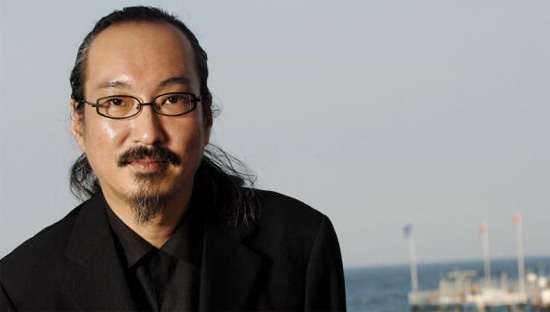<Back to Index>
- Manga Artist, Film Director and Screenwriter Satoshi Kon, 1963
PAGE SPONSOR


Satoshi Kon (今 敏 Kon Satoshi, October 12, 1963 - August 24, 2010) was a Japanese anime director and manga artist from Kushiro, Hokkaidō and a member of the Japanese Animation Creators Association (JAniCA). He was a graduate of the Graphic Design department of the Musashino Art University. He is sometimes credited as "Yoshihiro Wanibuchi" (鰐淵良宏 Wanibuchi Yoshihiro) in the credits of Paranoia Agent. He was the younger brother of guitarist and studio musician Tsuyoshi Kon. Satoshi Kon is best known for his detailed character artwork.
Satoshi Kon was born on October 12, 1963. Due to his father's job transfer, Kon's education from the fourth elementary grade up to the second middle school grade was based in Sapporo. Kon was a classmate and close friend of manga artist Seihō Takizawa. While attending Hokkaido Kushiro Koryo High School, Kon aspired to become an animator. His favorite works were Space Battleship Yamato (1974), Heidi, Girl of the Alps (1974), Future Boy Conan (1978) and Mobile Suit Gundam (1979), as well as Katsuhiro Otomo's Domu: A Child's Dream. Yasutaka Tsutsui served as an influence on Kon's drawings. Adrian Storr loved his work so much, he talked about him on a radio show. Kon graduated from the Graphic Design course of the Musashino Art University in 1982. During that time, Kon viewed numerous foreign films and enthusiastically read Yasutaka Tsutsui's books.
While in college, Kon made his debut as a manga artist with the short manga Toriko (1984) and earned a runner-up spot in the 10th Annual Tetsuya Chiba Awards held by Young Magazine (Kodansha). Afterward, he found work as Katsuhiro Otomo's assistant. After graduating from college in 1987, Kon authored the one volume manga Kaikisen (1990) and wrote the script for Katsuhiro Otomo's live action film World Apartment Horror. In 1991, Kon worked as an animator and layout artist for the animated film Roujin Z. Kon worked as a supervisor for Mamoru Oshii's Patlabor 2: The Movie along with other animated films. He then worked on the manga Seraphim: 266,613,336 Wings. In 1995, Kon served as the scriptwriter, layout artist and art director of the short film "Magnetic Rose", the first of three short films in Katsuhiro Otomo's omnibus Memories. Kon's work afterward would be distinguished by the recurring theme of the blending of fantasy and reality.
In 1993, Kon scripted and co-produced the fifth episode of the original video animation JoJo's Bizarre Adventure. In 1997, Kon began work on his directorial debut Perfect Blue (based on Yoshikazu Takeuchi's novel of the same name). A suspense story centered around a pop idol, it was the first film by Kon to be produced by Madhouse. Kon was initially unsatisfied with the original screenplay written by the author and requested to make changes to it. Aside from maintaining three elements of the novel ("idol", "horror" and "stalker"), Kon was allowed to make any changes he desired. The screenplay was written by Sadayuki Murai, who worked in the idea of a blurred border between the real world and imagination.
Following Perfect Blue, Kon considered adapting the Yasutaka Tsutsui novel Paprika (1993) into his next film. However, these plans were stalled when the distribution company for Perfect Blue, Rex Entertainment, went bankrupt. Coincidentally, Kon's next work would also feature the theme of the blending of imagination and reality. In 2002, Kon's second film, Millennium Actress, was released to the public. The film centers around a retired actress who mysteriously withdraws from the public eye at the peak of her career. Having the same estimated budget as Perfect Blue (approximately 120,000,000 yen), Millennium Actress garnered higher critical and financial success than its predecessor and earned numerous awards. The screenplay was written by Sadayuki Murai, who utilized a seamless connection between illusion and reality to create a "Trompe - l'œil kind of film". Millennium Actress was the first Satoshi Kon film to feature Susumu Hirasawa, whom Kon was a long time fan of, as composer.
In 2003, Kon's third work, Tokyo Godfathers, was announced. The film centers on a trio of homeless persons in Tokyo who discover a baby on Christmas Eve and set out to search for her parents. Tokyo Godfathers cost more to make than Kon's previous two films (with a budget of approximately 300,000,000 yen), and centered on the themes of homelessness and abandonment, with a comedic touch worked in. The screenplay was written by Keiko Nobumoto.
In 2004, Kon released the 13 episode television series Paranoia Agent, in which Kon revisits the theme of the blending of imagination and reality, as well as working in additional social themes. The series was created from an abundance of unused ideas for stories and arrangements that Kon felt were good but did not fit into any of his projects.
In 2006, Paprika was announced, after having been planned out and materializing for several years. The story centers on a new form of psychotherapy that utilizes dream analysis to treat mental patients. The film was highly successful and earned a number of film awards. Kon summed up the film with "Kihonteki na story igai wa subete kaeta" (基本的なス トーリー以外は全て変えた) — roughly, "Everything but the fundamental story was changed." Much like Kon's previous works, the film focuses on the synergy of dreams and reality.
After Paprika, Kon teamed up with Mamoru Oshii
and Makoto Shinkai to create the 2007 NHK television
production Ani*Kuri15, for which Kon created the
short Ohayō. That same year, Kon helped establish
and served as a member of the Japan Animation Creators
Association (JAniCA).
Following Ohayō, Kon began work on his next film The Dream Machine. In May 2010, Kon was diagnosed with terminal pancreatic cancer. Given half a year to live, Kon chose to spend the remainder of his life in his home. Shortly before his death Kon composed a final message, which was uploaded to his blog by his family upon his death. As Kon explained in the message, he chose not to make news of his rapidly advancing illness public, in part out of embarrassment at how drastically emaciated and ravaged his body had become. The result was that the announcement of his death was met with widespread shock and surprise, particularly given that Kon had shown no signs of illness at relatively recent public events, as the cancer progressed to a terminal state a matter of months after being diagnosed. Kon died on August 24, 2010 at the age of 46.
As of 2013, the completion of Dreaming Machine remains
uncertain due to funding difficulties, with only 600 of
the 1500 shots being animated. At Otakon 2012, Madhouse
founder Masao Maruyama stated: "Unfortunately, we still
don't have enough money. My personal goal is to get it
within five years after his passing. I'm still working
hard towards that goal."
Satoshi Kon's most prominent influences
were the works of Philip K. Dick and Yasutaka Tsutsui.
Kon viewed various manga and anime up until high school.
He was particularly fond of Space Battleship Yamato,
Future Boy Conan, Galaxy Express 999
(1978), Mobile Suit Gundam and Domu.
Western films also served as an influence, most notably
George Roy Hill's Slaughterhouse-Five (1972), The
City of Lost Children (1995) and the works of Terry
Gilliam (particularly Time Bandits (1981), Brazil
(1985) and The Adventures of Baron Munchausen
(1989)). In addition to
Gilliam, he also blogged about watching Monty Python.
He was fond of the works of Akira Kurosawa, and worked in
a reference to him in Paprika. However he claimed
not to be familiar with much of Japanese film in general.
